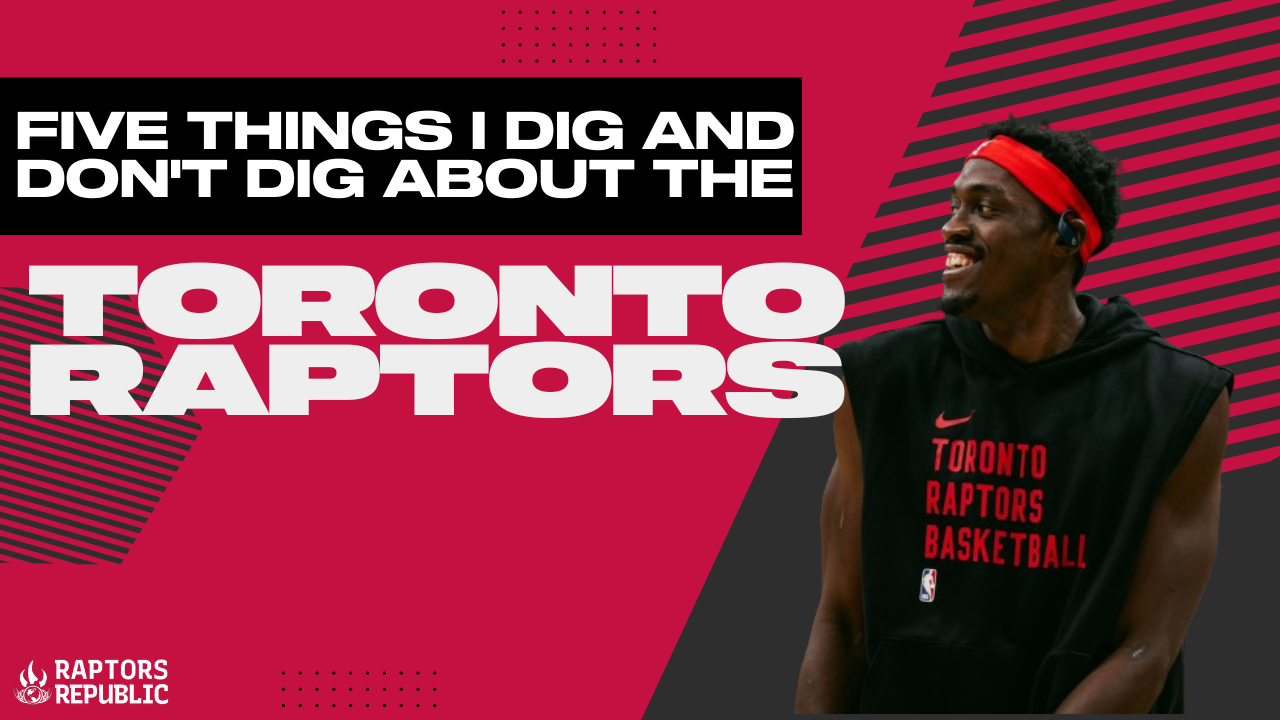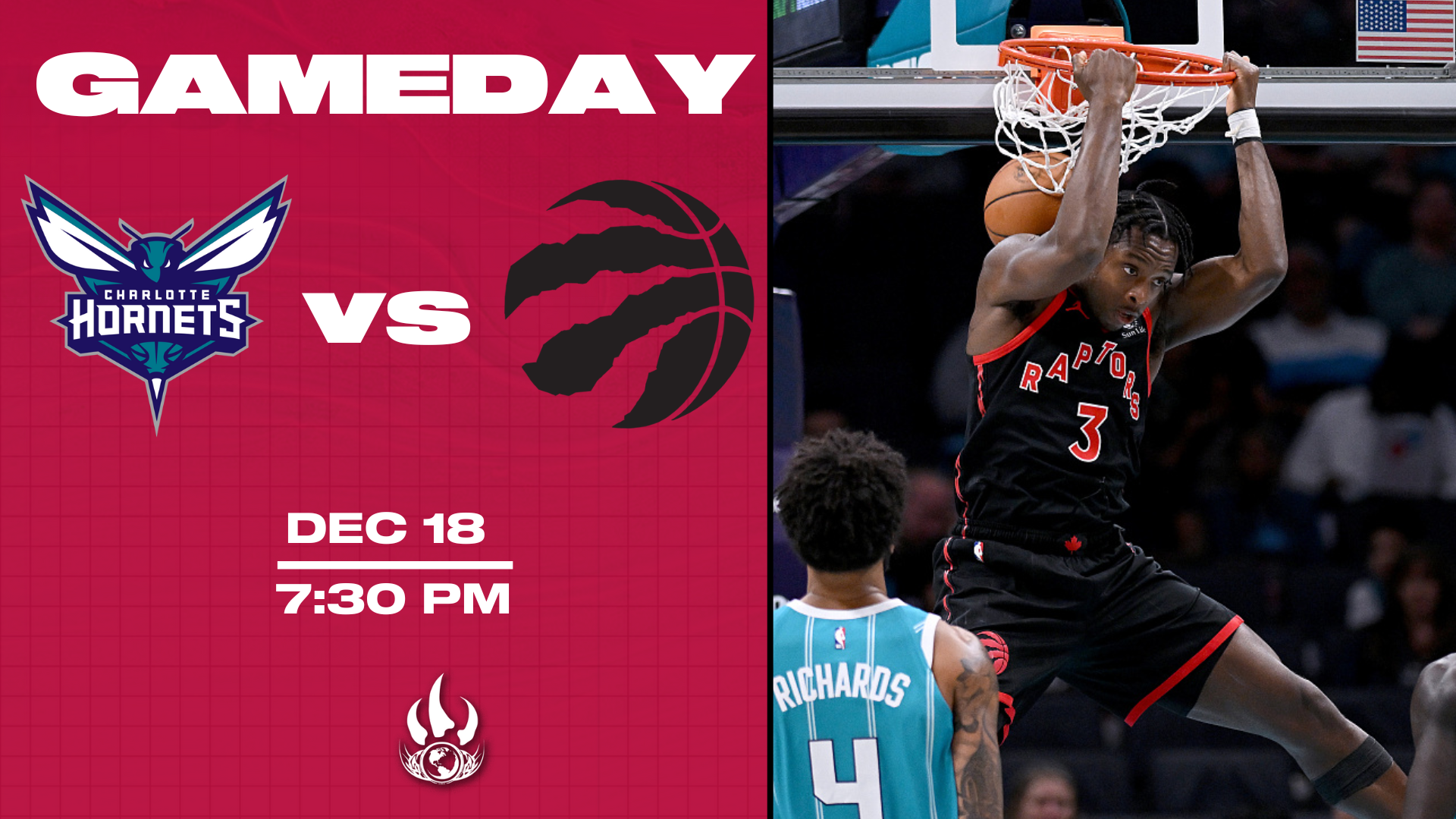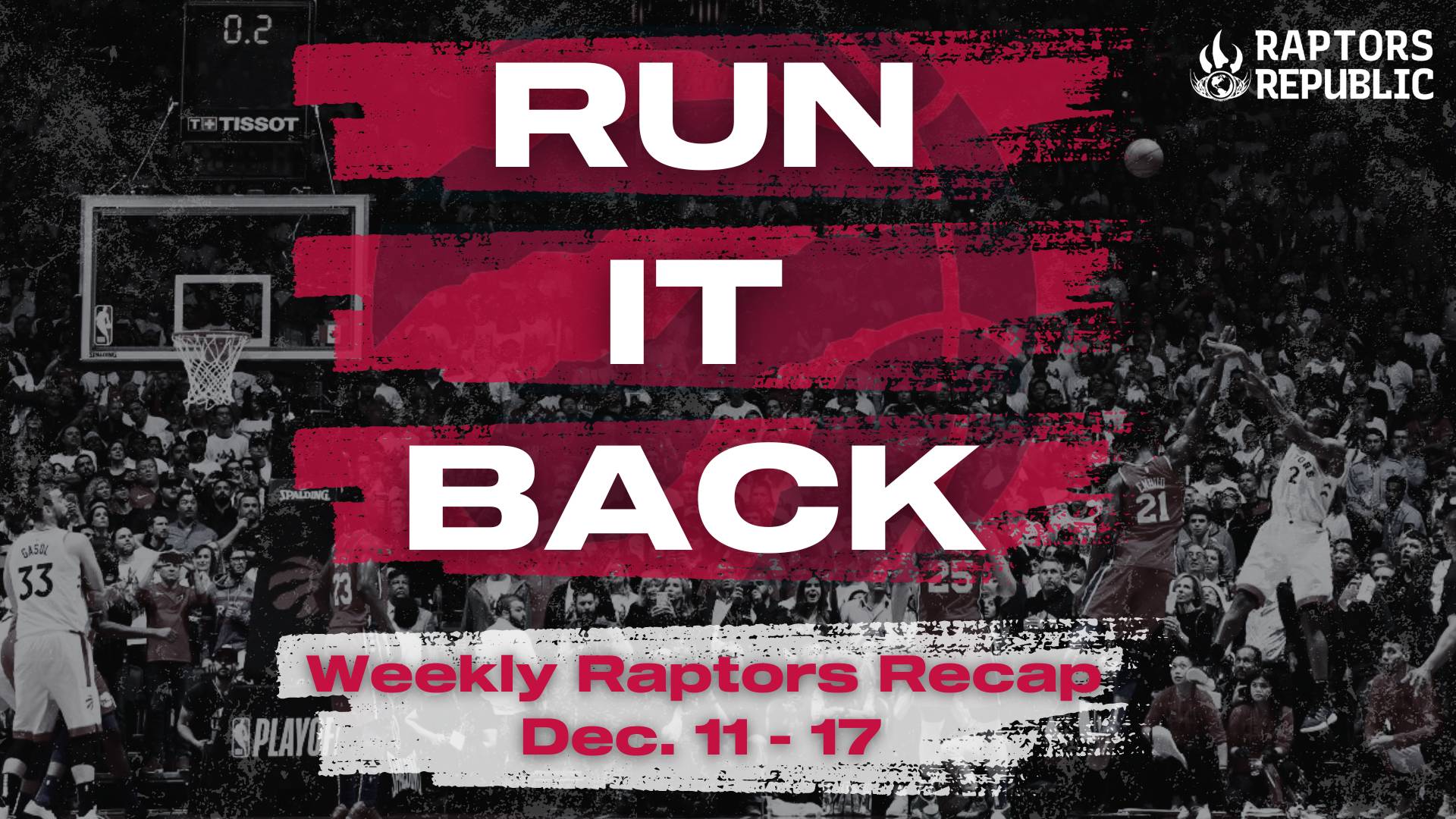Tough go for the Raptors of late.
3-7 in their last ten with an offence that, at times, sings (18th) only to fall hoarse at critical crescendos. And a defence (23rd in the same stretch) crumbling into the sea like a breached sand castle.
With each loss mounting and each up-and-coming team surpassing them, Toronto’s future is more opaque than ever. So much uncertainty and so few encouraging outcomes.
Such gloom is oft for naught. A quick five-game winning streak – and a pizza party – and this team’s prospects are viable (?); its spontaneous demise less likely (?). Or is it? Tough time to be decision-maker.
Only time will tell.
Let’s roll.
1. Pascal to Close
Pascal Siakam is the Toronto Raptors’ best scorer. His team-leading usage rate (25.1%) correlates to that distinction.
One would think, then, Pascal would also lead the team in usage to close games. He does not.
Come the fourth quarter Pascal’s usage drops to third on the team (21.4%) with Scottie Barnes (25.6%) and Dennis Schröder (22.3%) surpassing him. In clutch minutes (games within 5 points or less with 5 minutes or less left in the game), it’s more drastic: Scottie (29.7%) and Dennis’ (27.6%) control of the ball vaults well beyond Pascal’s (18.9%).
There’s logic to both. Dennis is the point guard – an aggressive, attack-first minded one at that. Scottie is a floating play-making city. An entire ecosystem morphing and evolving moment-to-moment of a game. Scottie is ranked eighth in the clutch, according to Inpredictable. The two are 28th and 31th, respectively, in efficiency among high-usage players in the clutch.
Still, there is little justification – especially, for Dennis – to have both players’ usage dramatically rise while also having Pascal’s emphatically plummet at the most pivotal moments. The Raptors are only 6-8 in the clutch.
Pascal’s an incisive magician. Conjuring buckets at the feet of hordes of crowding defenders from [almost] anywhere on the floor. He’s shooting the best of his career as a primary option. Toronto is meh-ly 15th in clutch points scored. Pascal’s clutch rating of 0.73 is fourth on the team, but demonstrably greater than Dennis’ 0.2. A simple logic model lusts for more Pascal.
Much of this is on head coach, Darko Rajaković. His altruistic ball-sharing ideals are to be lauded. With the game on the line, autocracy and greed and cruelty subverts all niceties. Plays designed to get Pascal the ball in his Areas of Operation are imperative. Lesser defenders identified, targeted, and exploited. Repeat.
Against Atlanta, on Wednesday, Pascal took two shots in the fourth quarter – with two assists and zero FTAs. Not enough. When he did get the ball, he scored. In exactly the fashion you’d think Pascal would.
Dennis and Jakob Pöltl double screen for Pascal. He gets the lumbering Clint Capela switched on to him. Straight-line drive lefty. Next play, below, Capela’s isolated on a switch again. Some nifty footwork from Pascal gets him a righty layup.
Simple things, like minutes, can be corrected. Pascal’s tied for fifth on the team with Chris Boucher for fourth quarter minutes played this year. His absence glaring for much too long stretches. On Friday, down eighteen to the Hawks in the fourth, Pascal subbed in halfway through the six minute-mark. Game was deep-fried by then.
New coach, new point guard, precocious rising star. Makes sense, when orifices tighten, chaos creeps. For order to persevere, Pascal needs the rock at the end of ball games.
2. Too Precious Screens
Precious is once again having a teeter-totter year. Injuries slowed him to commence the season. He’s percolated since. Coming to life with spectacular – soft and powerful – finishes at the rim and, for decent stretches, an effective three-point shot (36% on two attempts the last ten games).
Precious’ defence, too, can bedazzle. Emerging as the roaming, switchable, long demon Masai divined. Wednesday against Atlanta, he finished with two blocks and a steal. And, most impactfully, exemplified his ability to switch 1 to 5, halting Trae Young on several occasions who was otherwise chowing in the pick and roll.
His highlights are still littered with errors. Unwise drives or hoists. Carelessness. Disorientation on defence. And, poor screens. For someone so large and athletic, Precious screens daintily approaching defenders like they’re in the grocery aisle blocking the cereal he’s reaching for.
This team lacks a kind of violence. Not the reckless flying hammer open-handed punches kind. The kind to let opposing players know each step and stride could hurt.
It’s vital for Precious to send the pain. Not simply for the message, but to create the space and impede the dexterity of a responding defence. Without it, screens are neutralized, attacks, rolls, kicks, and everything else endangered.
Precious has a nice nuzzle with Saddiq Bey. His left leg the only thing making any hypothetical contact. Hypothetical because Precious rolls before Bey has a chance to feel anything. Dennis is forced into a very challenged jumper.
Here, the missed hit may have been strategic. It’s a double screen for Gary with Scottie and Precious. By slipping as the second screener, Precious gets an extra step towards the rim for a drop-off from Gary and draws RJ Barret from Scottie. Or, Precious was so eager to slip, he never took the time to hit Josh Hart. Some contact would have been nice.
I question Precious’ eager slipping because it happens frequently. Again, Precious evacuates before letting Jalen Brunson know whatsup. There are advantages to doing so. A ghost screen gives Precious a wide-open three, if Malachi spots him. Something run for Fred VanVleet often last year. Precious is not FVV.
We get a double spot here. First screen is a dribble-hand-off to Schröder. Trae Young and Precious glide by one-another like a pair of figure skaters. The re-screen is not much more of an impediment. Another tough jumper for Schröder with Capela keeping the threat of Precious’ roll minimal.
3. Where on Earth is Otto Porter Jr.?
Something seems fishy with Otto’s absence. He was eased back into the rotation after sitting out the majority of the 2022-23 season with a toe injury. The first four games he did not play, then for six of the next seven he played 10-15 minutes per game. He was a +7 total.
Then he kind of…
…disappeared.
- Inactive.
- DNP.
- 4 minutes of play.
- 11 minutes of play.
- DNP.
- 5 minutes of play.
- DNP
- DNP
- DNP
- 14 minutes of play
- 5 minutes
- Inactive
- DNP
- DNP
We don’t have all the information. It could be a health thing. It could a personal thing. It could be a conflict thing. I NEED TO KNOW.
The entire world of Basketball knows how utterly miserable the Toronto Raptors are at three-point shooting. Other than O.G. Anunoby, Otto is the best they have. Early in the season, he was a +/- darling. He also provides a myriad of other good tangible and intangible things I’ve discussed (#2) before. Yet, he’s nowhere to be seen.
It’s mysterious. A team in desperate need of any zest at all, leaves the lemon on the sidelines.
Fishy. Fishy, indeed.
4. Malachi Flynn Flies
It’s early. I shan’t jinx his success. I exalt nonetheless.
I wrote (#3) early this year that this was it for Malachi. He was at the end of the plank looking down at the Shanghai Sharks swirling. Even into the season, it looked all the more dire. His confidence and decision-making waxing and waning like a fast-forwarded moon phase.
Darko stayed the course. Consistent minutes at consistent intervals. That’s what all people need. Boundaries. Reasoned expectations. Encouragement.
And it worked.
My optimism for Malachi’s potential came in the foundational. Throughout his three years, he’s displayed flashes of elite shooting, handling, and passing. His size – or lackthereof – the speed of the game, and mostly, his confidence hindered all of it.
He still makes rash errors. Who doesn’t?
But he’s finally found cadence and comfort.
This year, at sixteen minutes a game (second most of his nascent career), he’s shooting 8% higher than last year in effective field goal percentage, finishing at the rim and in the restricted area more successfully.
A play like this is the total package. Dribble combination. East to west. North to south. With change of pace and speed. The tight finish in traffic. Old Malachi misses that or bails out before he gets there, passing or pulling-up.
Old Malachi also hoists this. That’s what he’s been “greenlighted” to do. Instead, he exploits the unbalanced closer and dosey-does for a tough reverse.
There’s still a ways to go in playmaking. Finding the right guy at the right time has been difficult for Flynn – again, size and confidence hamper his vision. But he rebounds extremely hard for his size and hustles on defence. That, along with his shooting, has allowed Darko to play him steadily and deploy him alongside Schröder at times. Giving the Raps two perimeter probers and shooting – desirous with Gary struggling.
With comfort and reps, Flynn’s finding himself as a distributor too. Wednesday’s game, he finished with 8 assists (albeit, some, thanks to the Raps hot shooting), getting paint touches and seamlessly finding the right dude.
In the last five games, Flynn’s up to 42% from three, 2 rebounds, 4 assists, and 2 turnovers a game. Not stupendous, but a vast jump from the jeopardized career he faced coming into the season.
5. Gone Gary Mid-Range Magic Gone
The figurative disappearance of Gary Trent Jr is troubling.
He’s always been inconsistent. Highs stratospheric; lows submarine. The floor of his production, last, year, however, reliable. In games where he played fifteen minutes or more, Gary scored ten points or less in only twelve games. This year he’s already at eleven.
Gary the Microwave blossomed last year with the expansion of his scoring. Venturing from the three-point line, both Gary’s at-rim (+9%) and short midrange (+6%) shot-making improved in efficiency. His renown for highly contested fadeaways and fluttering floaters preceding him. A lot of don’t shoot that…great shot moments.
This year that progress has retracted.
In 2022-23, Gary shot 55% from within 10 feet – accounting for 25% of his total shots. This year, he’s down to 36% on a slightly lesser shot distribution. At-rim it’s worse: from 64% accuracy to 52%.
It’s hard to know why he’s regressed other than: he’s on a big ol’ cold streak. Gary’s shot quality (387th among all players in the league) has not changed from last year. Yet, his shooting percentage on “tight” two-point field goals (shots with a defender 2-4 feet away) and open two-point field goals (shots with a defender 4-6 feet away) have both dropped.
It’s not just Gary’s shooting that is vital to Toronto. Without his self-creation, there’s no one else off the bench to alchemize a bucket. In 2022-23, 35% of his field goals made were unassisted. That’s dropped to 25%. The haplessness of the bench further exacerbated.
For Gary’s sake – a contract year – and the Raptors – both this season and current roster at risk – he’ll need that magic to materialize. And soon.



